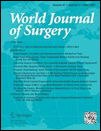High-Risk Breast Lesions Diagnosed by Ultrasound-Guided Vacuum-Assisted Excision
Copyright comment: Springer Nature or its licensor (e.g. a society or other partner) holds exclusive rights to this article under a publishing agreement with the author(s) or other rightsholder(s); author self-archiving of the accepted manuscript version of this article is solely governed by the terms of such publishing agreement and applicable law.
Abstract
Purpose
The aim of this study was to analyze the role of ultrasound-guided vacuum-assisted excision (US-guided VAE) in the treatment of high-risk breast lesions and to evaluate the clinical and US features of the patients associated with recurrence or development of malignancy.
Materials and methods
Between April 2010 and September 2021, 73 lesions of 73 patients underwent US-guided VAE and were diagnosed with high-risk breast lesions. The incidence of recurrence or development of malignancy for high-risk breast lesions was evaluated at follow-up period. The clinical and US features of the patients were analyzed to identify the factors affecting the recurrence or development of malignancy rate.
Results
Only benign phyllodes tumors on US-guided VAE showed recurrences, while other high-risk breast lesions that were atypical ductal hyperplasia (ADH), lobular neoplasia (atypical lobular hyperplasia/lobular carcinoma in situ), radial scar, and flat epithelial atypia did not show recurrences or malignant transformation. The recurrence rate of the benign phyllodes tumor was 20.8% (5/24) in a mean follow-up period of 34.3 months. The recurrence rate of benign phyllodes tumor with distance from nipple of less than 1 cm was significantly higher than that of lesions with distance from nipple of more than 1 cm (75% vs. 10%, p < 0.05).
Conclusions
Benign phyllodes tumors without concurrent breast cancer could be safely followed up instead of surgical excision after US-guided VAE when the lesions were classified as BI-RADS 3 or 4A by US.




